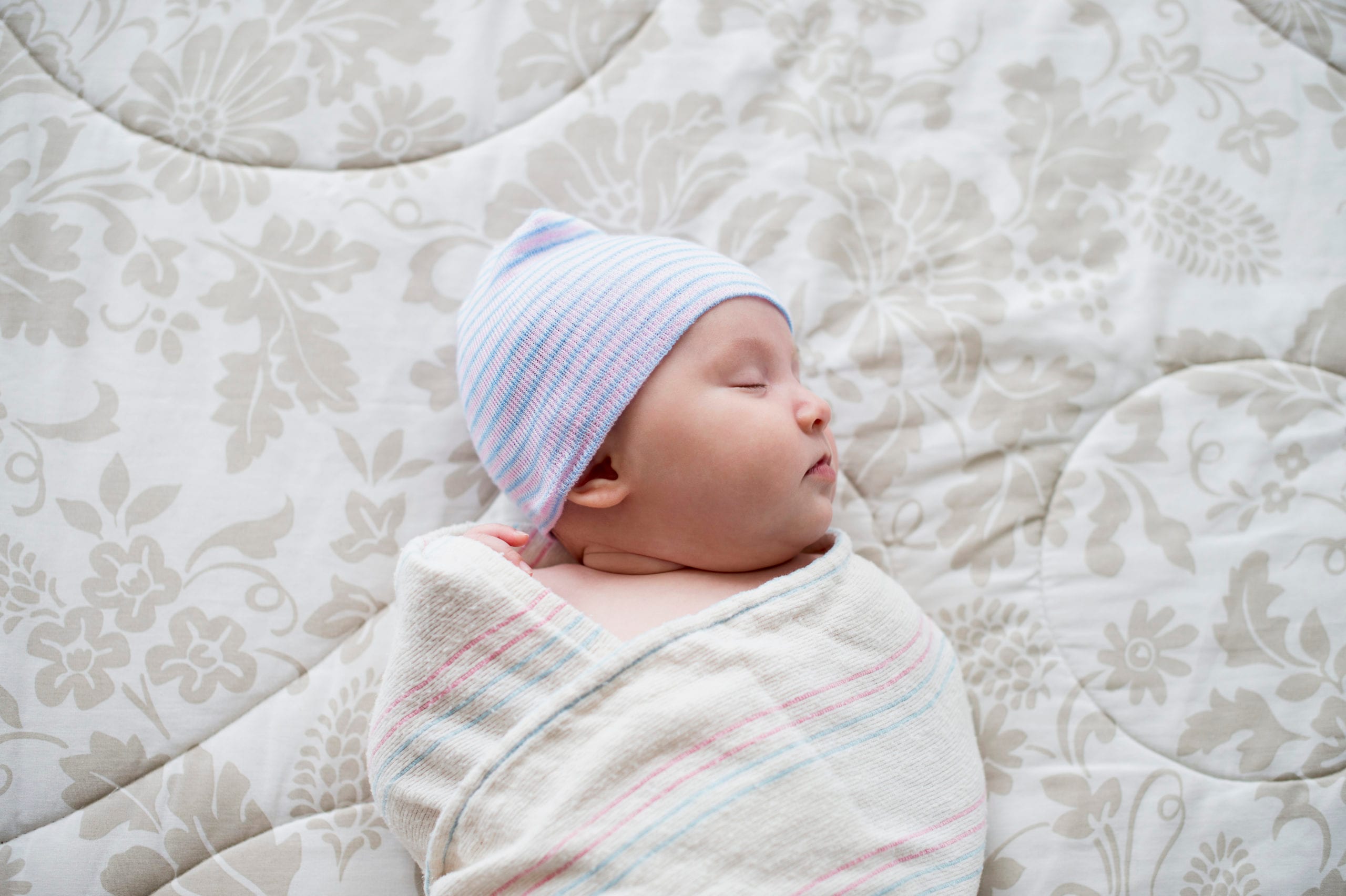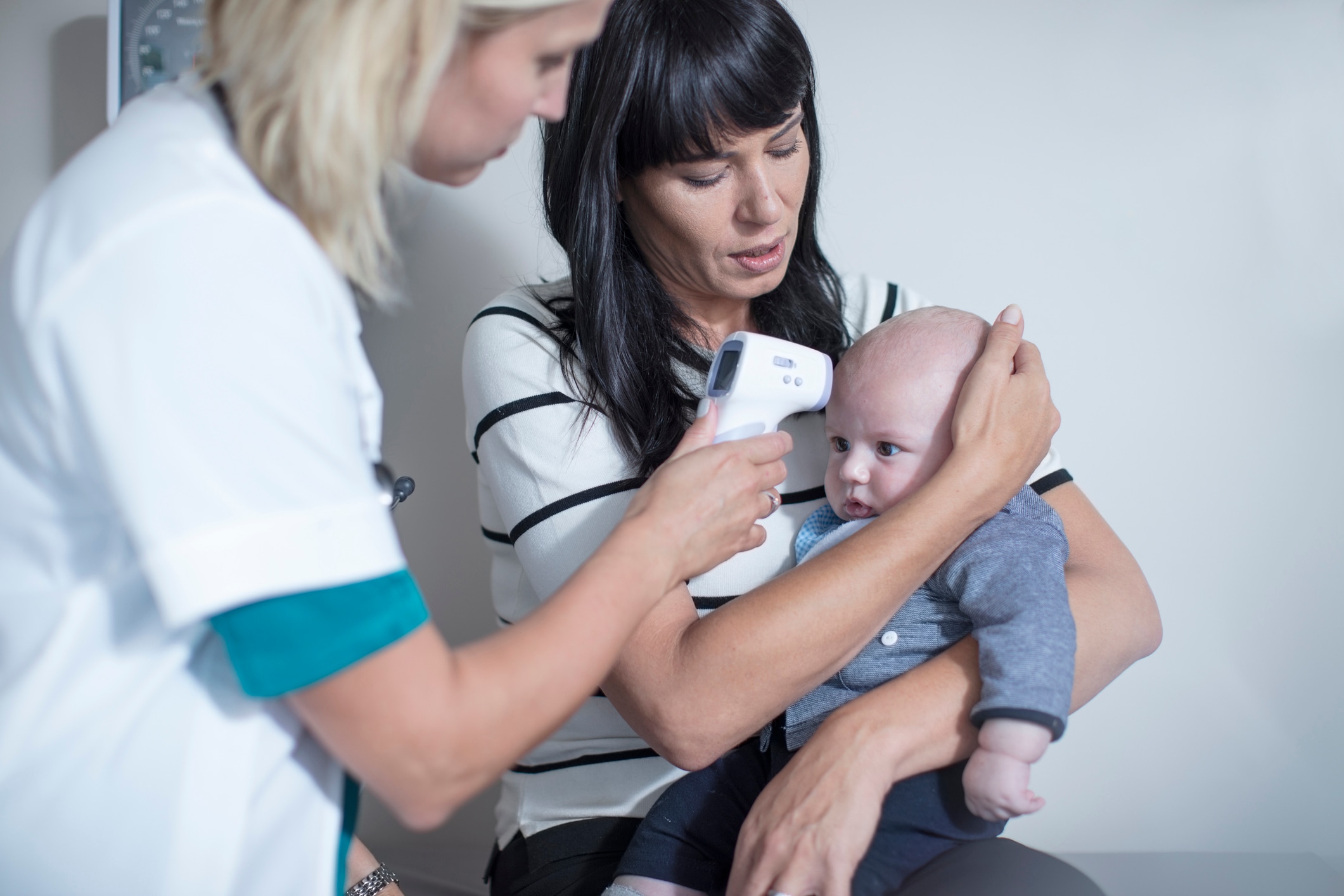If you’re squeamish about bugs, there are few parenting woes that feel as “ick” as your child coming home with lice. Casey C., a mom of two from Kansas City, recalls that dealing with lice was “one of those things where you feel like you just want to burn down your house!” Luckily, there’s no need to go to extremes.
Experts agree: If you find lice — or their eggs, called nits — on your child’s head, you can treat it easily by knowing the latest medical guidance on lice and taking swift action. “Lice aren’t dangerous, and they don’t transmit any diseases. They’re just creepy and annoying little creatures,” says Dr. Michelle Bennett, a pediatrician with Elliston Pediatrics.
Lice can affect any hair type, thickness or texture. And, no, you don’t have to shave anyone’s head — or burn down your house! — to treat head lice. Here’s everything you need to know about how kids get lice, how experts say to treat lice and answers to some of your most frequently asked questions about head lice.
Key takeaways
- Lice are common, harmless and spread mainly through quick hair-to-hair contact — not through dirtiness, pets or a dirty house. They’re annoying but easily treatable with proper identification, over-the-counter treatments and thorough combing.
- Kids don’t need to miss school for lice, since infestations usually develop over weeks and treatment works quickly. Modern guidelines from the CDC, AAP and school nurses discourage “no-nit” policies that cause unnecessary absences.
- Successful treatment means treating everyone in the household, repeating the process after a week, and cleaning items that touched hair — plus daily checks and tied-up hair to prevent future outbreaks. Most “natural” remedies aren’t reliable, but OTC permethrin treatments and professional services are effective.
How do kids catch lice?
Whether kids sit a little too close together at school or bunk together at camp, lice infestations are almost bound to happen. The Centers for Disease Control and Prevention (CDC) estimates six to 12 million lice infestations occur each year among children ages 3 to 11.
It takes two to three seconds of hair-to-hair contact for lice to move from their host onto another person. Think: a nurse leaning in to look inside your ear; a crowded bus or subway car; kids doing… pretty much anything that kids do, or jackets being stuffed together in a cubby. Once it finds a host, an adult louse can lay 10 eggs a day. The eggs take about a week to hatch, and if unnoticed, those 10 would lay their own eggs.
Join Care for free
An average case of lice, according to Lena Gorelik, the founder of the in-home service Lice-Free Noggins, would be anywhere from five to 30 bugs and maybe 100 nits — the eggs, which are too small to be seen or caught with a comb when they are first laid and grow to be poppy-seed sized.
How do you check for head lice?
When you think your child has lice, hypochondria can overshadow logic. But Gorelik says there are several other flakey interlopers that could appear on your child’s scalp and be nothing to worry about. Here’s how to tell if you’ve got a case of lice or not.
First, pull whatever you’re seeing off the hair and place it onto a piece of paper, a tray or other plain background. It may be easiest to spot something in the sparser hairs right behind the ear. Then, investigate.
- A nit is teardrop-shaped and feels almost like a grain of sand that is firmly stuck on the strand of hair or hanging off; you can’t easily move it up or down or manipulate the shape. When you place it against a white background, the egg will be white or yellowish and tinged brown. Empty shells will be clear but still retain their shape.
- Sebum is an oily secretion from the scalp. Gorelik explains that sometimes sebum mimics lice nits because it looks light or yellowish and appears to hang off the hair, but if you touch or squeeze it, you can move it and change its texture and shape.
- Hair casts are the tubular casing from a hair follicle. This will slide up and down the hair almost like a straw.
- Dandruff is quite different from lice. Dandruff comes in all different sizes and shapes and will fall down when hair is shaken. Nits don’t move, and lice are dark in color and noticeably bug-like in appearance.
If you’re still not sure you can identify what you have, Lice Free Noggins offers a free head lice diagnostic tool online. Upload a photo and Gorelik herself will text or email back with confirmation. “I get a lot of pictures of lint,” she laughs. “I just say, ‘pull on the tiny little string and let it unravel.’ Funny-not-funny, but I get a lot of those pictures.”
Myths and facts about head lice
There’s about as much misinformation about lice as there are bugs themselves, so let’s clear up some of the most common misconceptions.
Myth: Lice are a sign of being dirty
In fact, “Lice likes clean hair,” says Dr. Dyan Hes, director of pediatrics at Concorde Medical Group of Northwell Health. The bugs can’t grip onto oily (or unwashed) hair as easily. So, no, your child isn’t “the dirty kid” just because they came home with lice. (Also, the dog can’t catch it — or give it to you.)
Myth: Lice is more common in the fall, winter, etc.
There is no time of year when lice outbreaks are more prevalent. It can happen any time heads (or jackets and hats) are close enough for a little bug to crawl from one to the other.
Myth: Lice can infest an entire house or classroom
Lice eggs need to be laid right next to the scalp, within ¼ inch, where it’s the perfect temperature for incubation,” Gorelik says. “People think ‘all these eggs could’ve fallen off, and I’ll have bugs everywhere!’ But those don’t matter,” she explains. “Any egg off the head is in the process of dying.”
“Another big misconception is people associate lice with bed bugs and get super skeeved out,” she adds. “Lice cannot survive off of a human host for more than 24 hours; they can’t survive when they’re not on the head, and they are not making a space in every nook and cranny of your home.”
Myth: Kids with head lice always feel itchy
Not everyone feels itchy when they have head lice, says Gorelik. “That’s the major assumption, and a lot of people are in denial when they think their kids couldn’t have lice if they aren’t itchy.”
Do kids need to miss school if they have head lice?
According to the most recent CDC policy statement on head lice, school administrators “do not need to send students with head lice infestation home early from school.” Instead, the guidance instructs that students found to have lice can go home at the end of the school day, be treated and then return to class. Likewise, kids with an active case of lice discovered at home can still go to school as long as it’s being treated.
“When a child is found to have head lice while at school, it’s not as if they just suddenly got lice that morning. They’ve probably had lice lurking for weeks or even months.”
— Dr. Michelle Bennett, pediatrician
“When a child is found to have head lice while at school, it’s not as if they just suddenly got lice that morning,” Bennett explains. “They’ve probably had lice lurking for weeks or even months, so sending them home a few hours early doesn’t accomplish much of anything, other than causing the child to miss important hours of school and the parent or caregiver to possibly have to miss important hours of work.”
Additionally, the CDC explains:
- Many nits are unlikely to hatch to become crawling lice.
- Nits bond to hair shafts and are unlikely to transfer to other people.
- Misdiagnosis of nits is common among non-medical professionals.
“Lice treatment products work quickly to kill lice, and they continue to work killing newly-hatched lice for days after use, so children can return to school the morning after being treated,” Bennett adds.
The CDC guidance might seem surprising to adults who attended school in the ’90s when lice was treated more like an emergency; however, it is in line with the current guidelines of both the American Academy of Pediatrics (AAP) and the National Association of School Nurses (NASN). All three organizations discourage the use of “no-nit” policies — rules that require kids to be sent home and remain home until they have no detectable nits, or lice eggs, remaining in their hair — due to the burden they place on students, parents and the community.
How do I treat lice at home?
If you had lice as a kid, you probably have a memory of parking in front of the longest movie your parents could find, and having someone painstakingly comb through your hair with a high test shampoo that made your eyes water. (P.S. Have you thanked them for this? It was surely not their favorite day.) This is still an option for at-home lice removal.
Ranging from $16 to $30 per kit, with some including a spray that can be used on upholstery around the home, trusted brands include:
- NIX
- Rid
- Vamoose
- Fairy Tales
At home lice treatments are all based on the same active ingredient, permethrin, which is completely safe to use, says Hes.
“I don’t recommend using the ‘natural’ treatments, like Cetaphil, Vaseline, olive oil or mayonnaise,” Bennett adds. “They may work to some extent, but they usually don’t work 100%, and they’re not reliable enough to trust. They’re likely to set you up for a long and tedious course of recurring lice — and potentially spreading it to others.”
Additionally, some people use tea tree oil or rosemary oil on the kid’s hair to kill lice, but Hes says, “As a pediatrician, I have to tell you that it doesn’t really [work].”
Removing lice at home: Step-by-step
Be sure you carefully read the instructions on the lice treatment you’ve bought. There may be variations, but these are the basic steps to get rid of lice at home:
1. Wash and towel-dry the hair.
2. Apply the treatment thoroughly, including behind-the-ears, nape of neck, and massage it into the scalp. It may tingle or smell, and must be kept out of eyes. Let it sit for 10 minutes or more (depending on instructions).
3. Using the included super-fine comb, part the hair into small sections and comb thoroughly to remove any lice or nits, getting the comb as close to the scalp as possible every time. This is the time-intensive part, so turn on that movie.
4. Wipe or rinse the comb clean as you go, being sure to throw away any tissues or paper towels in a sealed plastic bag.
5. Repeat the entire process one week to 10 days later — no matter what. Many lice treatments kill the bugs only, not the nits, which is why it’s crucial to comb every single one out, dispose of them carefully and repeat.
“Once you start moving the hair around and they see the light, they’re running for cover. You have to run a comb through as opposed to looking through visually.”
— Lena Gorelik
Remember, newly laid nits are too small to even be seen or caught by a comb. And, Gorelik explains, lice are photophobic: “Once you start moving the hair around and they see the light, they’re running for cover. You have to run a comb through as opposed to looking through visually.”
The experts we spoke with agree that when lice are found on one person in the household, everyone in the household must be treated in order to truly prevent an outbreak. “If you leave one bug behind, you’re leaving that chance for another infestation,” warns Gorelik.
Prescription treatments for head lice
Hes and Gorelik agree that prescription lice treatments aren’t necessary; in most cases an over-the-counter kit does the trick. In fact, Hes urges parents not to bring their children to the doctor with lice and needlessly expose others.
If treating everyone with a home kit doesn’t work, or it’s an extremely heavy case (which Gorelik describes as hundreds of lice and thousands of nits), there are prescription strength medications — Sklice and Ovide — but the former is tough to find and the latter is not recommended for toddlers or infants under one year.
Also, you can use FSA funds to pay for your lice treatments and services, whether OTC or prescription.
What to know about expert lice removal
Of course in the parenting era that brought us DiaperKind and UberEats, there are services available to outsource your whole lice ordeal. Companies exist all over and offer by-appointment (and urgent) lice-removal. A quick Google search will reveal the expert lice treatment locations and companies near you, but the services are basically the same and generally range from $100 to $200 per person (convenience doesn’t come cheap, unfortunately).
Some use permethrin-based treatments, like the at-home kits, and some use herbal solutions, so choose the service that best suits your needs. If you’d rather go right to the pros for lice removal, here’s what you can expect.
- The visit will start with an initial check (around $20 per person) to make sure lice are present.
- When lice or nits are found, most companies roll that cost into the overall removal price. Some offer packages for handling more than one family member.
- From there, the process is much like your at-home box kits. They will apply a solution and let it sit, then comb to remove the nits.
One key difference: Expert removal services are often guaranteed (check this before choosing one!), meaning there’s no need to repeat the process a week later unless you discover more lice or nits. In that case, they’ll do a second round for free.
Some lice removal services don’t guarantee their services unless everyone in the household is treated. (And remember, if you leave a bug behind, you’re accepting the risk of an ongoing infestation.)
How do I get lice out of the house?
If any nits came off of someone’s head onto their pillow, your couch or car seat, they’re likely on the way to being dead and won’t hatch, reassures Gorelik. But you want to be sure there aren’t any live bugs hanging around, which requires the following smart steps:
1. Put all bedding, clothing, stuffed animals and scrunchies that could’ve been in contact with lice into the wash and dryer. It is the heat of the dryer that kills the bugs so a hot dry-cycle is important.
2. Items that can’t be dried on high can skip the wash and just get sealed in a plastic bag for two days. Remember, the bugs only live for 24 hours without a host to latch onto.
3. Boil hard items, like hair brushes and barrettes, that could’ve caught lice or nits.
4. Vacuum your couch then cover it with a sheet or plastic garbage bag for 24 hours.
5. Finally, you can buy lice-killing spray for upholstered surfaces, like one that comes with Rid lice removal kits.
How to prevent future lice infestations
A few expert-backed moves to preempt future lice debacles:
Check your child’s hair daily
The best way to prevent a lice infestation is to check your children’s hair daily. Our experts also agree that wearing long hair tied up in a bun or braid is the best idea to safeguard against those wiley strand-steppers.
Try a hat or hair products
Baseball caps aren’t a bad idea when sending kids to day camp, notes Hes. She also adds that hair with product in it — gel, hairspray, or other oils — is less appealing to lice and can make it impossible for them to grip on.
Gorelik also recommends a lice-preventing spray (like this one by Fairy Tales) that acts like bug repellant. Try a generous spritz before school or camp.
Communicate with other parents
Despite any shame or “ick” feelings, let other parents know about any lice, so they can be responsible and check their own kids, says Casey. She cringed her way through that text and made a new mom friend in the process.
The bottom line on lice and kids
The bottom line is that lice is just another “bug” that kids can come home with — like a cold. There’s no need to feel ashamed or overwhelmed when it happens to you.
“Even with preventive measures, pretty much every kid catches lice at one point or another, so don’t panic when your child does,” Bennett says. “And remember, it’s not a matter of hygiene. Kids all over the world and of all socioeconomic classes catch lice. It’s a nuisance, but we fortunately have great and quick treatment options!”
Additional reporting by Ashley Austrew





